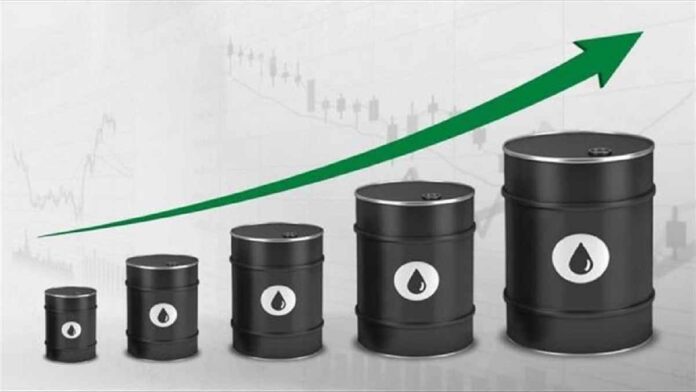Oil Claws Back Losses but Price Action Still Unimpressive
Crude oil has recovered but the price action was far from impressive, with Brent crude finishing only 0.74% higher at $73.40 per barrel and West Texas Intermediate closing 2.75% higher at $70.05 per barrel, OANDA analyst Jeffrey Halley said in a Tuesday note.
Brent initially climbed 5% intra-day but gave back almost all those gains, Halley noted. In Asia, both contracts edged up 0.8% to $73.95 for Brent and $70.55 for WTI, the analyst said.
The price of the OPEC basket of 13 crudes plummeted to $74.20 per barrel on Monday, the lowest since late September, according to OPEC Secretariat calculations.
The OPEC basket price hovered around $80/b in November but finally dropped below $75 per barrel on Monday. The basket price stood at $76.09 to a barrel last Friday.
Russia said it had not heard from other OPEC+ members regarding pausing output increases at the scheduled meeting, which seemed to have capped Brent’s recovery, Halley said.
Halley also believes that the odds of a temporary halt to production increases have risen well above 50%, especially with OPEC+ compliance already above 100%, which suggests limited swing capacity.
“Rather than second-guessing OPEC+, I am content to watch from the side-line from here, as oil markets will be more vulnerable than most omicron headlines and violent swings in sentiment,” Halley said.
U.S Firm Says Its COVID-19 Tests Can Detect Omicron Variant
The United States-based medical technological company, Hologic, said late Monday its COVID-19 tests are able to detect the omicron variant of SARS-CoV-2, the virus that causes the disease.
The company said it conducted an analysis of genetic sequences from more than 175 omicron-infected samples obtained through the global initiative on sharing all influenza data.
It found that none of the new mutations occurs within regions of the genome targeted by its Aptima SARS-CoV-2 Assay, Aptima SARS-CoV-2/Flu Assay, or Panther Fusion SARS-CoV-2 Assay.
US Strategic Petroleum Reserve Could Decline by Nearly Half
The US Strategic Petroleum Reserve could decline by nearly half by the start of fiscal 2032, the lowest level since March 1983, after taking into account newly passed legislation and the White House’s recent announcement of a coordinated release, the US Energy Information Administration said in a Monday report.
The White House plans to release 50 million barrels of crude oil into the market through exchanges and the acceleration of sales. Including this and several other legislated drawdowns, SPR inventories could fall to about 314 million barrels in 2032 from 618 million barrels as of Oct. 1, the EIA said.
The Infrastructure Investment and Jobs Act passed in early November included a provision to draw down 87.6 million barrels from the SPR in fiscal years 2028 through 2031, according to the EIA.
The reserve was designed to hold up to 714 million barrels of crude oil across four storage sites along the Gulf of Mexico. Releases from the SPR should fall under four conditions: emergency drawdowns, test sales, exchange agreements and nonemergency sales. The first two are relatively rare, the agency noted. # Oil Claws Back Losses but Price Action Still Unimpressive
Read Also: Oil Recovers as Omicron Threat Eases, Japan to Ban Foreigners












